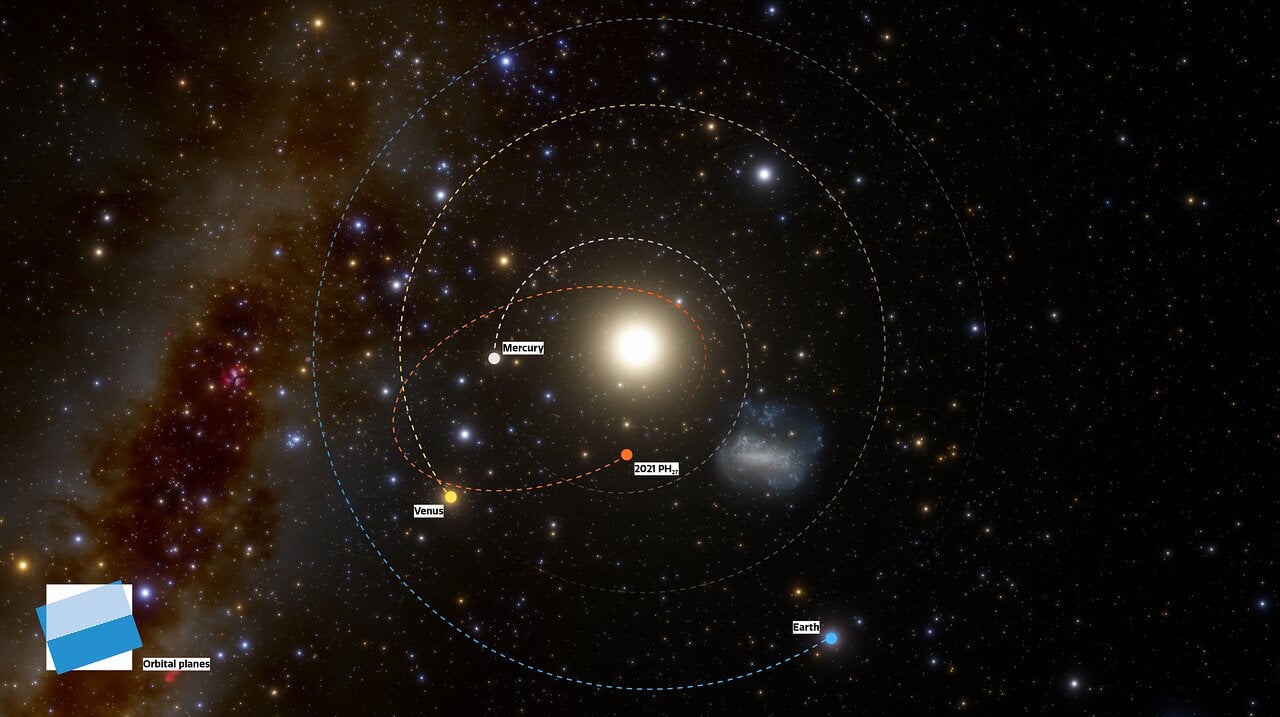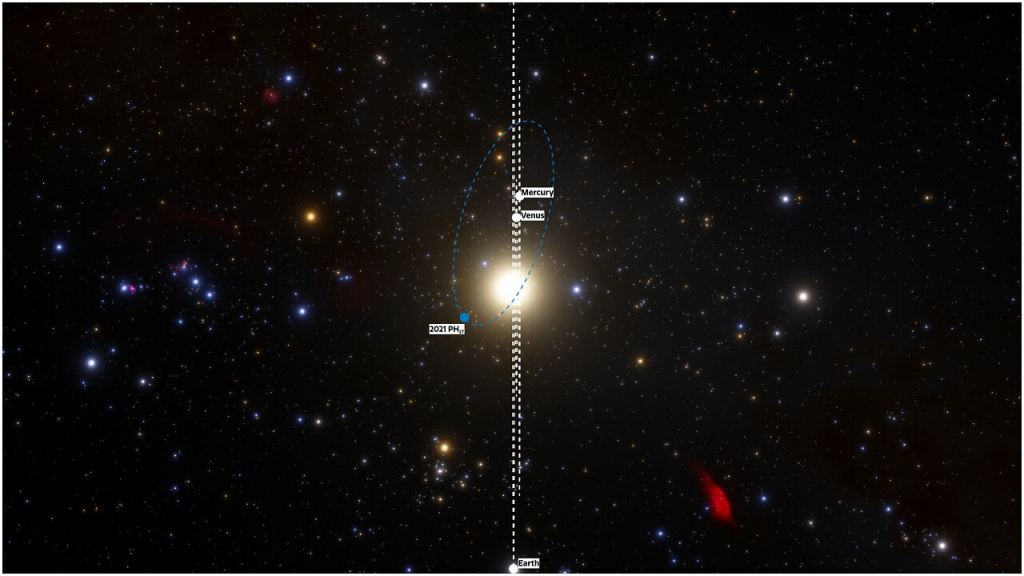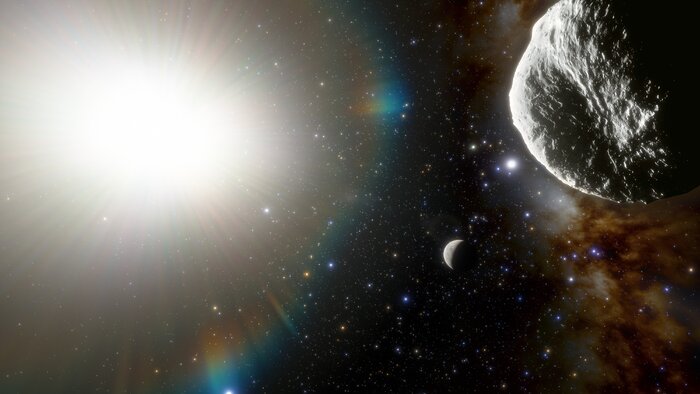Astronomers have spotted the fastest-ever asteroid orbiting Sun -- and at times, it gets closer to the Sun than the planet Mercury.
Asteroid 2021 PH27 was discovered earlier this month, and it has the shortest orbital period of any known asteroid in the Solar System. The orbit of the approximately 1-kilometer-diameter asteroid brings it as close as 20 million kilometers (12 million miles or 0.13 au), from the Sun every 113 days.
But followup observations of this object reveals that it is on an unstable orbit, one that crosses the orbits of Mercury and Venus. This means, astronomers say, that within a few million years it will likely be destroyed in a collision with one of these planets or the Sun, or it will be ejected from its current position.
One idea of this object's origin is that is it could be an extinct comet from the outer Solar System that got captured into a short period orbit when passing near one of the terrestrial planets. But there are other possibilities, too.
"Most likely 2021 PH27 was dislodged from the Main Asteroid Belt between Jupiter and Mars and the gravity of the inner planets shaped its orbit into its current configuration," said Scott S. Sheppard of the Carnegie Institution of Science, who made the discovery, along with Brown University's Ian Dell'Antonio and Shenming Fu.
The asteroid is so close to the Sun's massive gravitational field, it experiences the largest general relativistic effects of any known Solar System object, the team said. At its closest point to the Sun, the object likely almost 500 degrees C (900 degrees F). That's hot enough to melt lead.
2021 PH27 has now passed behind the Sun and won't be visible again until early in 2022. More observations are planned for then to determine its precise orbit, which will allow it to be officially named.
Sheppard said the discovery of 2021 PH27 is significant because it will help astronomers learn more about asteroids that could one day impact Earth.
"Understanding the population of asteroids interior to Earth's orbit is important to complete the census of asteroids near Earth, including some of the most likely Earth impactors that may approach Earth during daylight and that cannot easily be discovered in most surveys that are observing at night, away from the Sun," Sheppard said.
Further reading:
NOIRLab press release
Carnegie Science press release
 Universe Today
Universe Today


